No one likes to think about diseases and pests in their garden. In a perfect world, we’d all have Pinterest-worthy gardens that get enough sun, are perfectly watered, and always produce well.
The reality is, pests and plant diseases are going to happen to you. If you’re new to gardening, there’s a few simple things you can do to give your garden a better chance of avoiding common diseases and pests.
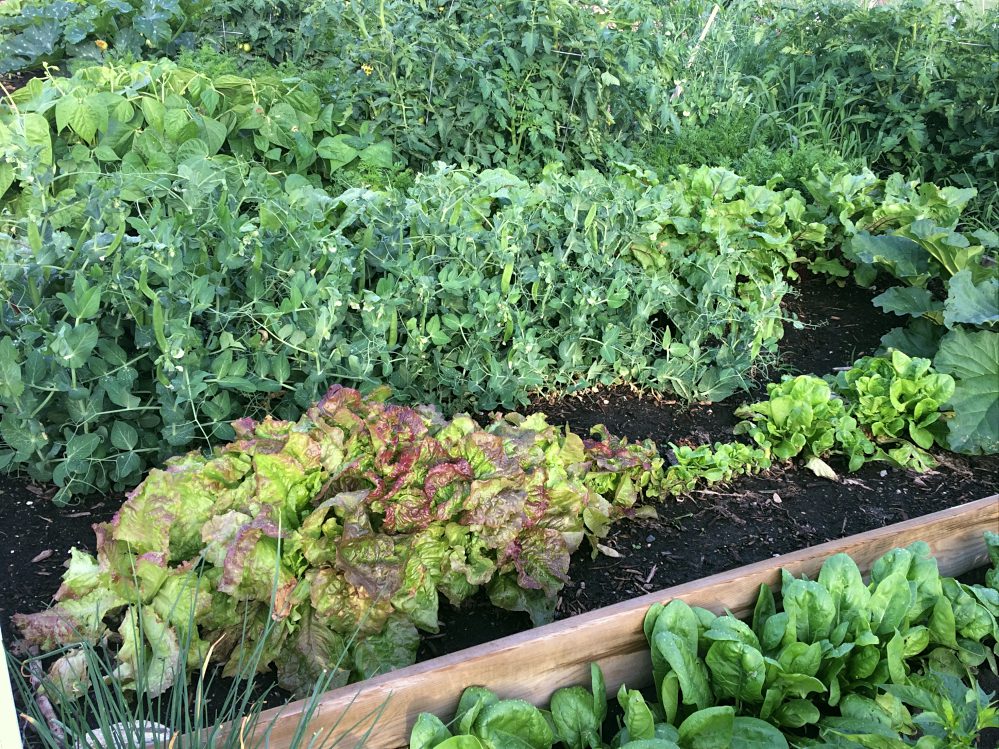
This post contains affiliate links, which means that I earn a small commission at no extra cost to you if you purchase something. You can read more about it in my Privacy Policy. Thanks for supporting Shifting Roots!
Rotate Your Crops
Rotating your crops is the easiest way to keep disease and bugs out of your vegetable garden. But what is it?
All vegetables have a plant family. For example, corn is part of the grass family, broccoli and cauliflower are cruciferous vegetables, and tomatoes peppers, and eggplants are nightshades.
Plants from each family take different amounts of nutrients from the soil, and in the case of the legume family, put nutrients back in the soil.
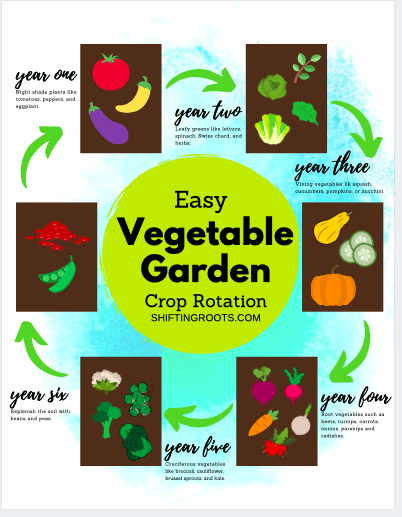
So if you keep planting the same vegetable in the same spot year after year, you’ll deplete the soil of those particular nutrients, which invites bugs and disease.
This is why it’s so important to have a garden planner and keep track of where you planted everything each year. If you don’t use one already, you can get a free garden planner here.
If your head is spinning with the thought of trying to keep all of this straight, I’ve also made an easy six year rotation for you to use, or you can find a more detailed version in my beginner gardening course.
Don’t Crowd Out Your Vegetables
Folks, I love square foot gardening to the moon and back, but it can be really tempting to try and get vegetables in even closer than suggested. Sure, it looks fine in May, but by late July it will be a crazy jungle that you can barely get through.
When plants don’t have enough air circulation, they are susceptible to mold and mildew type diseases. Last year I had a terrible infestation of powdery mildew, in part because of the weather and in part because I tried to squeeze too many things in my garden.
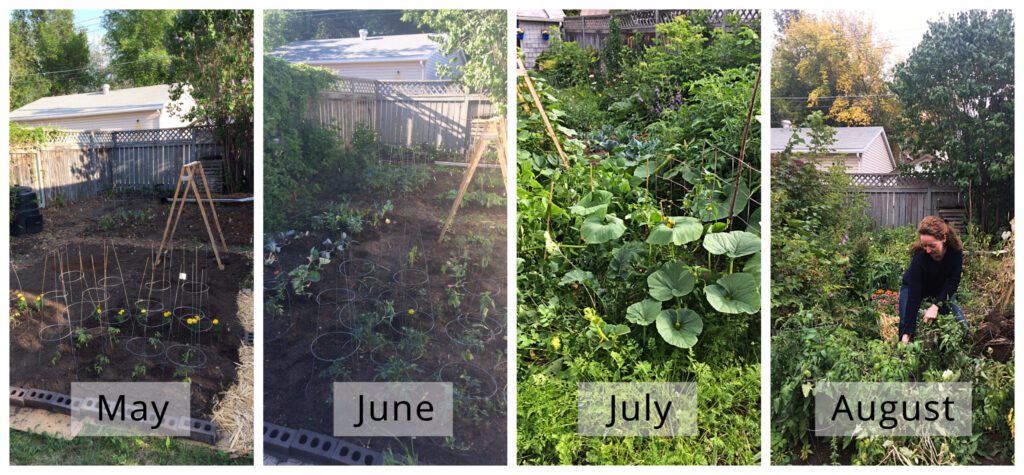
Experiment with Companion Flowers
Companion flowers, such as marigolds, bee balm, zinnias, nasturtiums, and more can be a huge help in the garden. They encourage pollination, as well as possibly keep some bugs away from your vegetables.
Be warned that one or two sporadic marigolds is not going to protect your whole garden. You’ll need a serious amount of flowers directly by the vegetable to actually create an effect.
You can read more about companion flowers here.
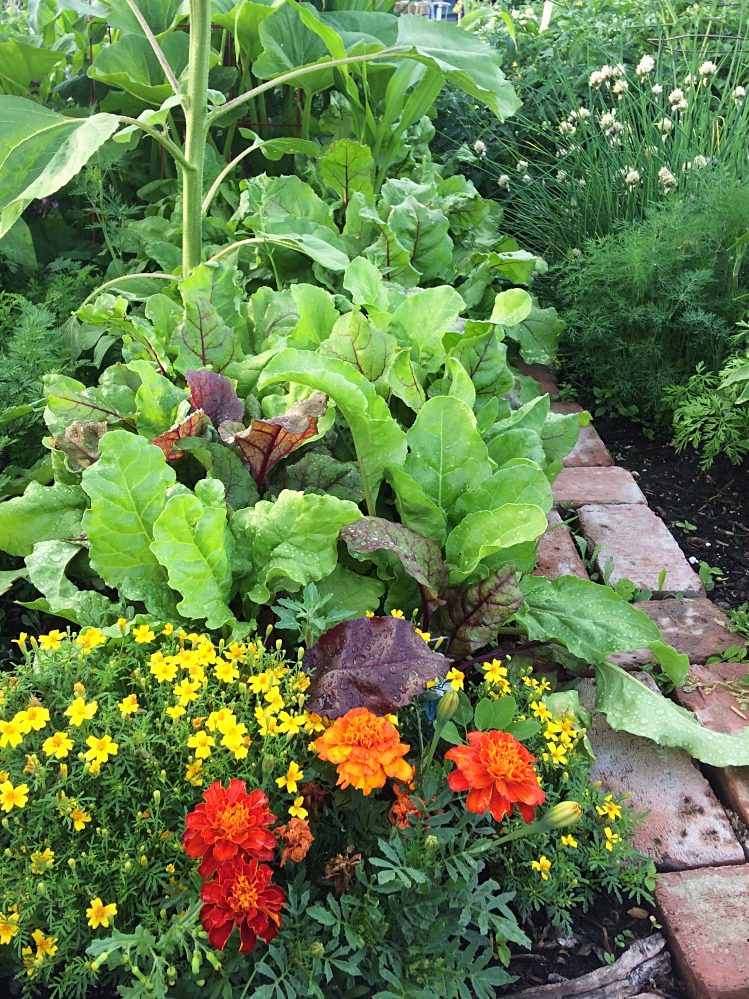
Create Barriers
Sometimes the only way to keep bugs at bay is to use a physical barrier, like mesh fabric over hoops.
Where I live, cruciferous vegetables are almost impossible to grow because farmers like to plant canola, which shares a lot of the same pests. The only way (that I know of) to have nice broccoli, cauliflower, and brussel sprouts is to cover them with white mesh fabric that lets the water and light in and keeps the moths out.
You might live somewhere where this isn’t a problem. However, talk to gardening friends in your area and I’m sure there will be that one bug that is prolific and impossible to keep away. A barrier is probably your solution.
Make Friends with Beneficial Bugs
Not all bugs in the garden are your friend. For example, lady bugs, bees, and lacewings are all bugs you want to see. This video below goes into more detail:
Water Your Plants Just Right
Sometime in late-July, just when you’ve been kind of sick of your garden but your excitement renews because the first of your tomatoes are starting to appear, you’ll see a blackish-brown scab on the end of that prized tomato. Argh!!!!
That’s blossom end rot, and it’s caused by a lack of calcium due to inconsistent watering. Blossom end rot can be reversed in a plant, but those tomatoes you were so excited about are no good.
So keep to a regular watering schedule, so you don’t have to experience garden heart ache!!
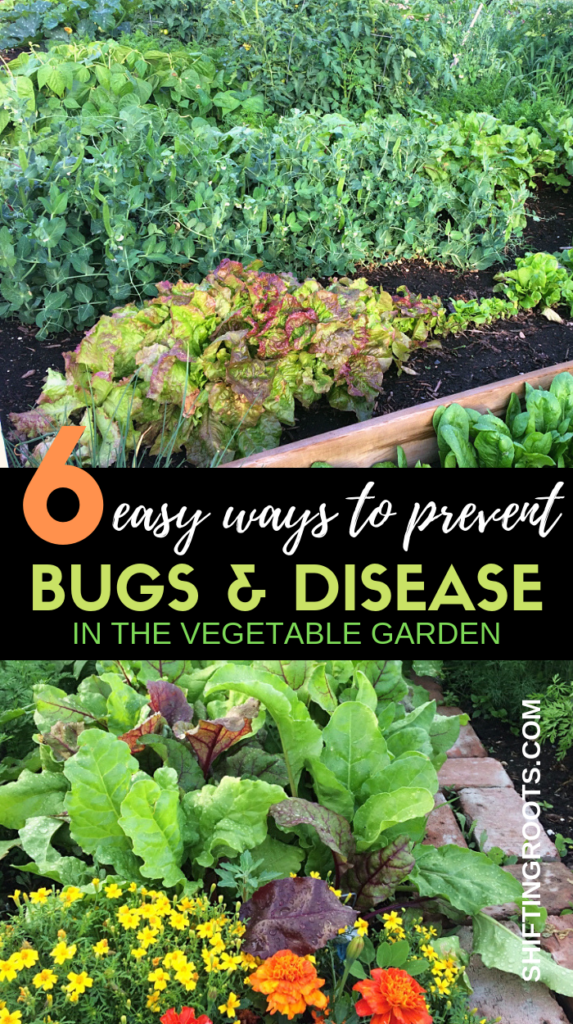
Do you know any other easy ways to prevent garden diseases? Let me know in the comments!

Jane Goff